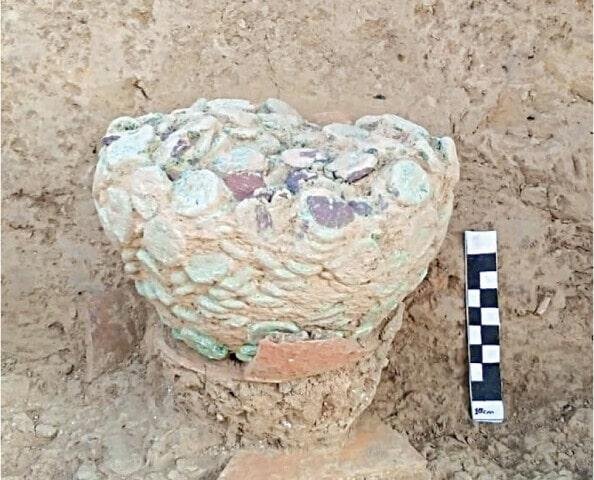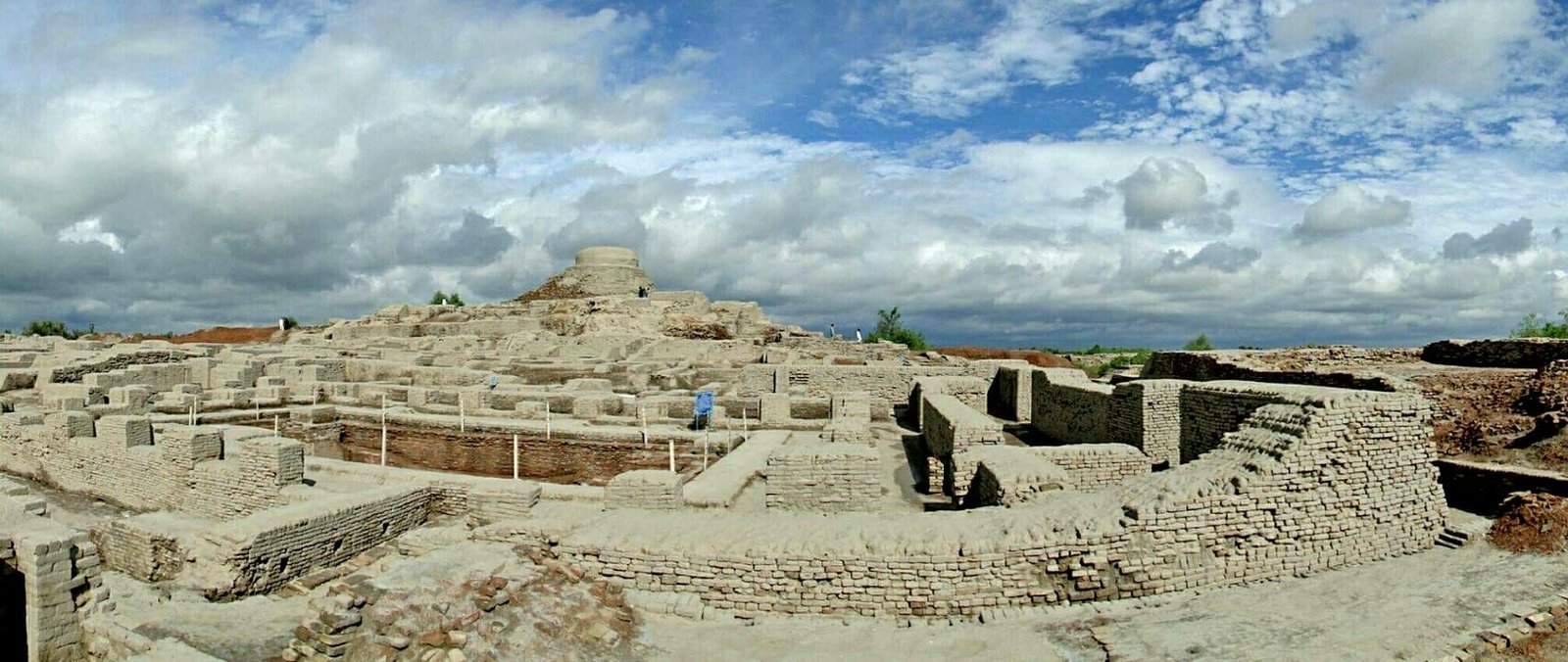A pot filled with ancient copper coins has been unearthed during conservation work at the UNESCO World Heritage Site of Mohenjo Daro in Pakistan’s Sindh province. This marks the first remarkable discovery of artifacts in the 5,000-year-old city ruins in 93 years.
 The pot of copper coins. Credit: Saeed Memon
The pot of copper coins. Credit: Saeed Memon
Mohenjo Daro, also known as the “Mound of the ᴅᴇᴀᴅ,” stands as an ancient Indus Valley Civilization city that thrived between 2600 and 1900 BCE. The vast ruins, constructed entirely from unbaked brick, exemplify an early system of town planning, featuring an acropolis, ramparts, and a lower town. The city, discovered in the 1920s, remains the best-preserved urban settlement in South Asia.
The recent find, a pot filled with copper coins, was discovered at the stupa on the Western side of Mohenjo Daro during preservation work. The team, led by Director of Archaeology Mohenjodaro, Dr. Syed Shakir Shah, made the discovery on the Western side of the stupa’s Divinity street.
During conservation work, laborers initially uncovered the pot of coins, but it was later reburied. The archaeologists, including archaeological conservator Ghulam Shabir Joyo, resumed excavation and secured the coins buried in the debris along with the jar.
 Excavated ruins of Mohenjo-daro. Credit: Nikesh Chawla
Excavated ruins of Mohenjo-daro. Credit: Nikesh Chawla
The jar, weighing about five and a half kilograms, was carefully shifted to the soil testing laboratory at the site for further examination. The coins, believed to date back to the Kushan Period, were found rusted and stuck together, prompting a meticulous treatment process to separate and analyze them.
According to Sheikh Javed Sindhi, engaged in research at the site, the discovery echoes the previous excavation of 4,348 copper coins during 1922-1931, attributed to the Kushan Period spanning the 2nd to 5th Century CE. The current find is hailed as remarkable after 93 years, with experts crediting the Mohenjodaro team for the breakthrough.
Director Shakir Shah stated that although the coins have been temporarily moved to the laboratory, experts will be hired to confirm the period based on inscriptions on the coins. The research aims to identify the specific dynasties of the Kushan Period to which the coins belong.
Rustam Bhutto, in charge of the soil and water testing laboratory, outlined the treatment process, anticipating at least a month to make the figures and language on the coins visible. The coins’ inscriptions will be examined by experts to determine their historical significance.
The Kushans, existing from the 1st to the 3rd century CE, played a pivotal role in connecting regions through trade, diplomacy, and cultural exchange.





